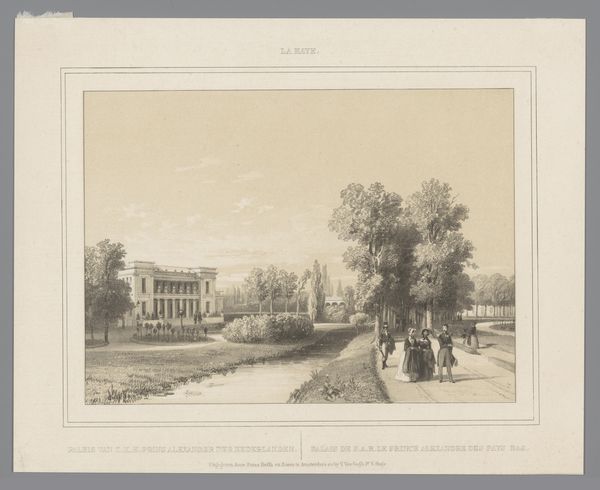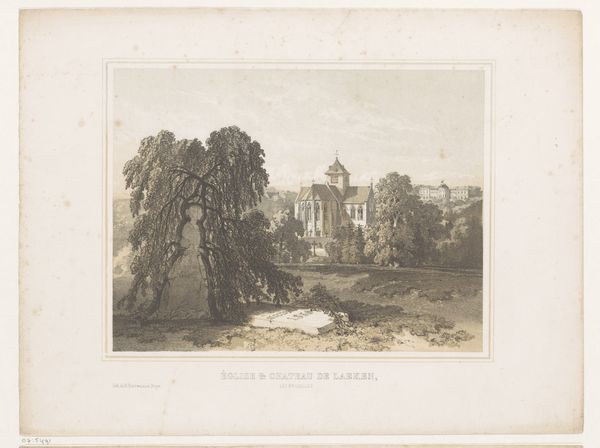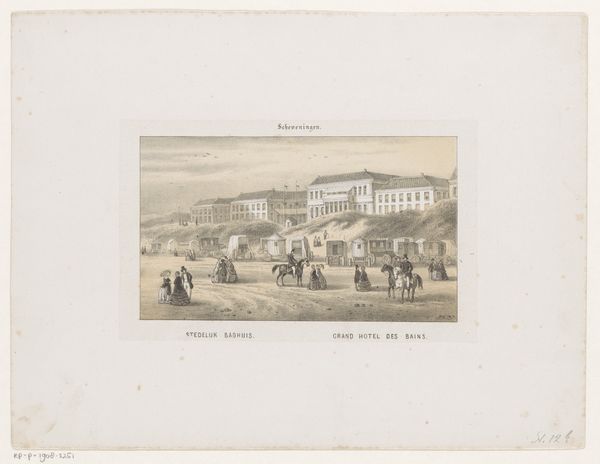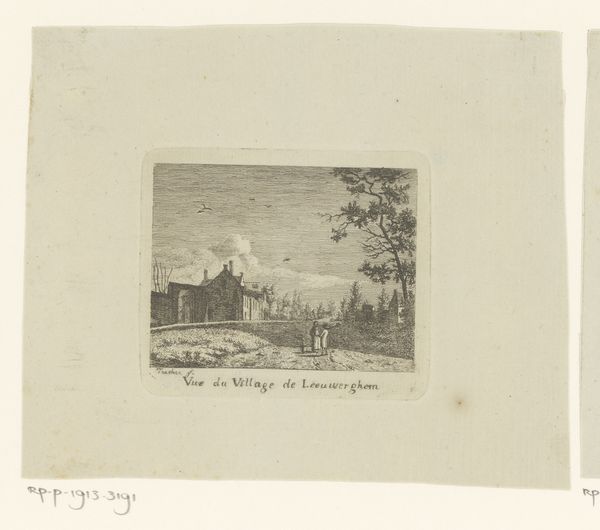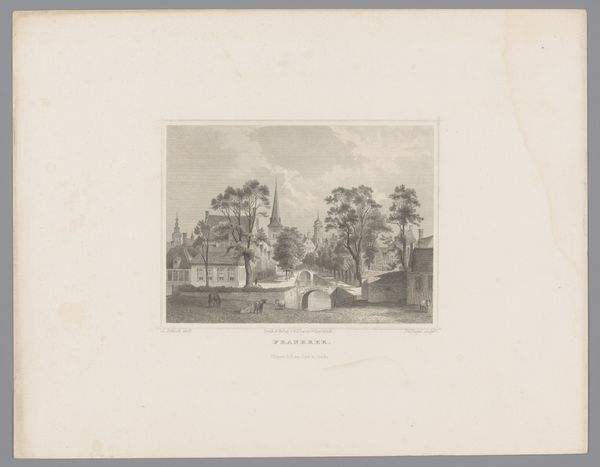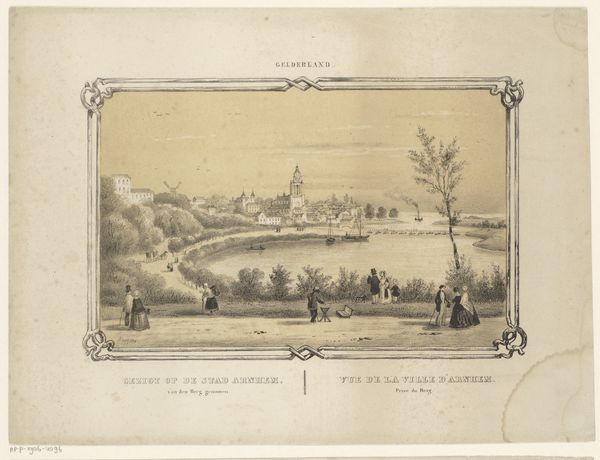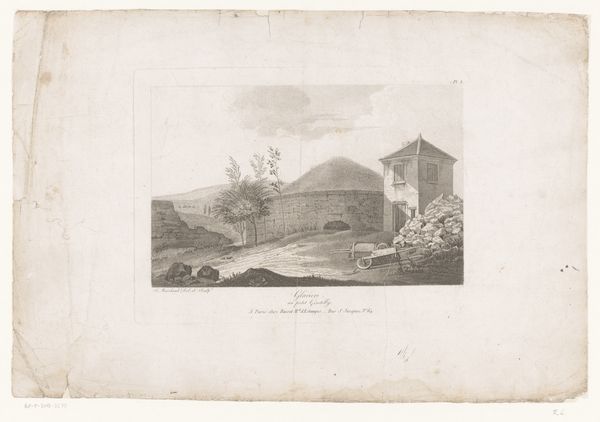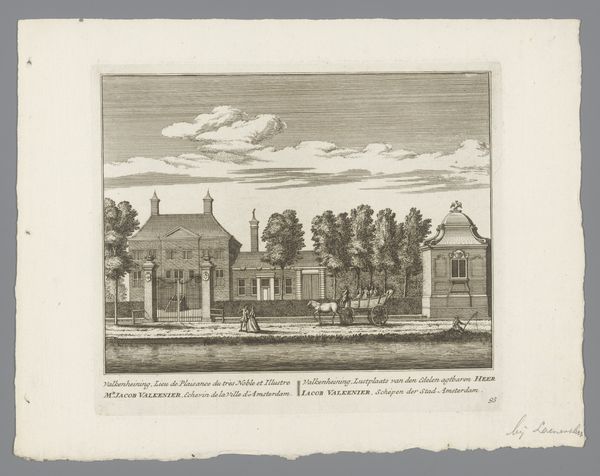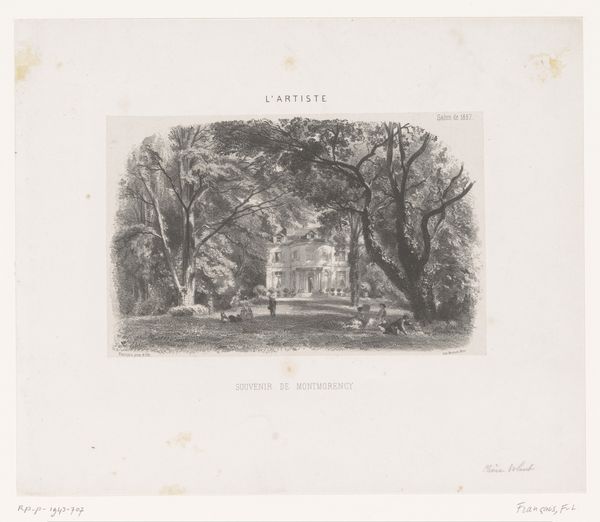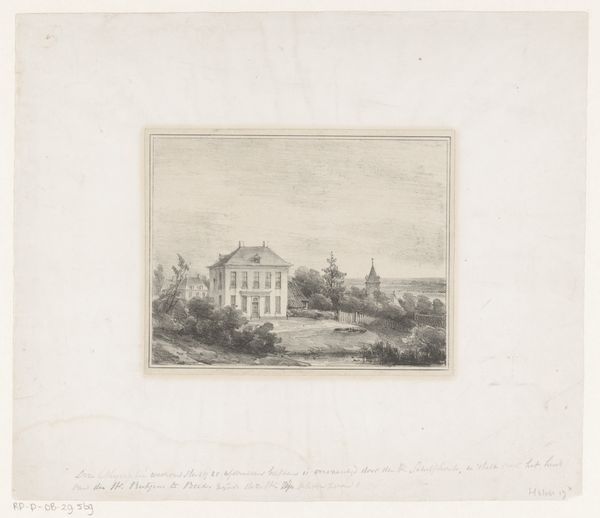
drawing, print, engraving
#
drawing
#
dutch-golden-age
# print
#
landscape
#
cityscape
#
engraving
#
watercolor
#
realism
Dimensions: height 250 mm, width 330 mm
Copyright: Rijks Museum: Open Domain
This print of the Paviljoen Von Wied was made by Hendrik Wilhelmus Last, and shows the building sometime in the mid-19th century. It’s an etching, a process that begins with a metal plate, usually copper or zinc. The artist coats the plate with a waxy, acid-resistant material, then draws into that coating with a sharp needle. The plate is then immersed in acid, which bites into the metal only where it has been exposed by the drawing. This creates an incised line. The plate is then inked, and the surface wiped clean, leaving ink only in the etched lines. Finally, it’s pressed onto paper. The technique is fascinating because it allowed for the relatively easy reproduction of images. And in this case, that reproductive capacity is put to the service of depicting a new, leisure-oriented society. What had been the preserve of the rich and aristocratic, became newly available to a wider public, mediated of course through the print medium. So, it’s a democratizing effect – but one that’s dependent on the skilled labor of the artist, and the wider economic forces of consumerism and capitalism.
Comments
No comments
Be the first to comment and join the conversation on the ultimate creative platform.


